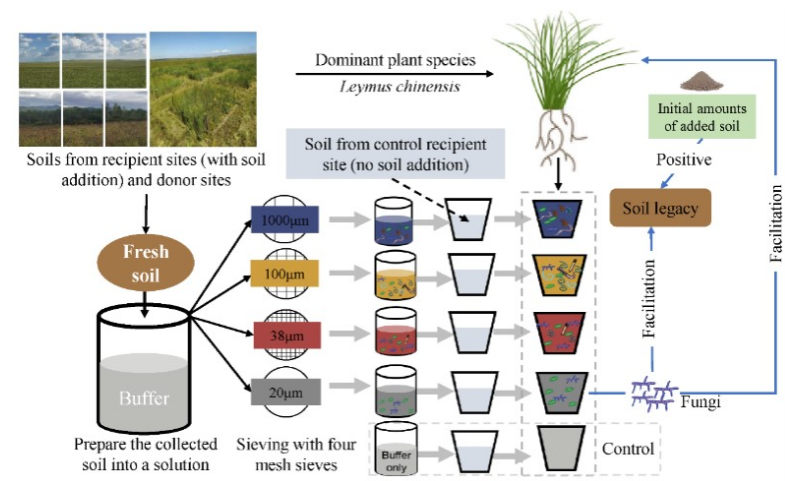Microscopic Soil Organisms Play a Pivotal Role in Restoring Degraded Grasslands
A recent study has revealed that tiny soil organisms, particularly fungi, play a crucial role in the long-term recovery of degraded grasslands. Four years after a one-time soil inoculation from donor sites (Fig. 1), these small-sized organisms transferred from donor sites continue to influence soil microbial composition and promote plant growth within recipient ecosystems. The research, titled “Small-sized soil organisms drive the legacy of soil addition in a degraded grassland,” was published in Functional Ecology in April 2025.
Researchers from the Chinese Academy of Sciences' Institute of Applied Ecology conducted field experiments where they introduced soil to degraded grassland areas. The researchers found that the legacy effects—persistent ecological impacts resulting from the soil addition—were primarily driven by soil organisms smaller than 20 micrometres in size, with fungi playing a particularly prominent role. These findings highlight the importance of plant-soil microbe interactions in ecological restoration.
The study further revealed that the amount of soil added during inoculation significantly influenced the magnitude of these legacy effects. This underscores the dual importance of both the quantity of soil introduced and the specific composition of small soil organisms in designing effective restoration strategies.
Overall, the findings offer valuable insights into ecosystem rehabilitation, emphasizing the often-overlooked but essential role of microscopic soil life in facilitating long-term ecological recovery.

Figure 1: Soil inoculation experiment and soil sieving treatment design framework (Image by LI Yuhui).



